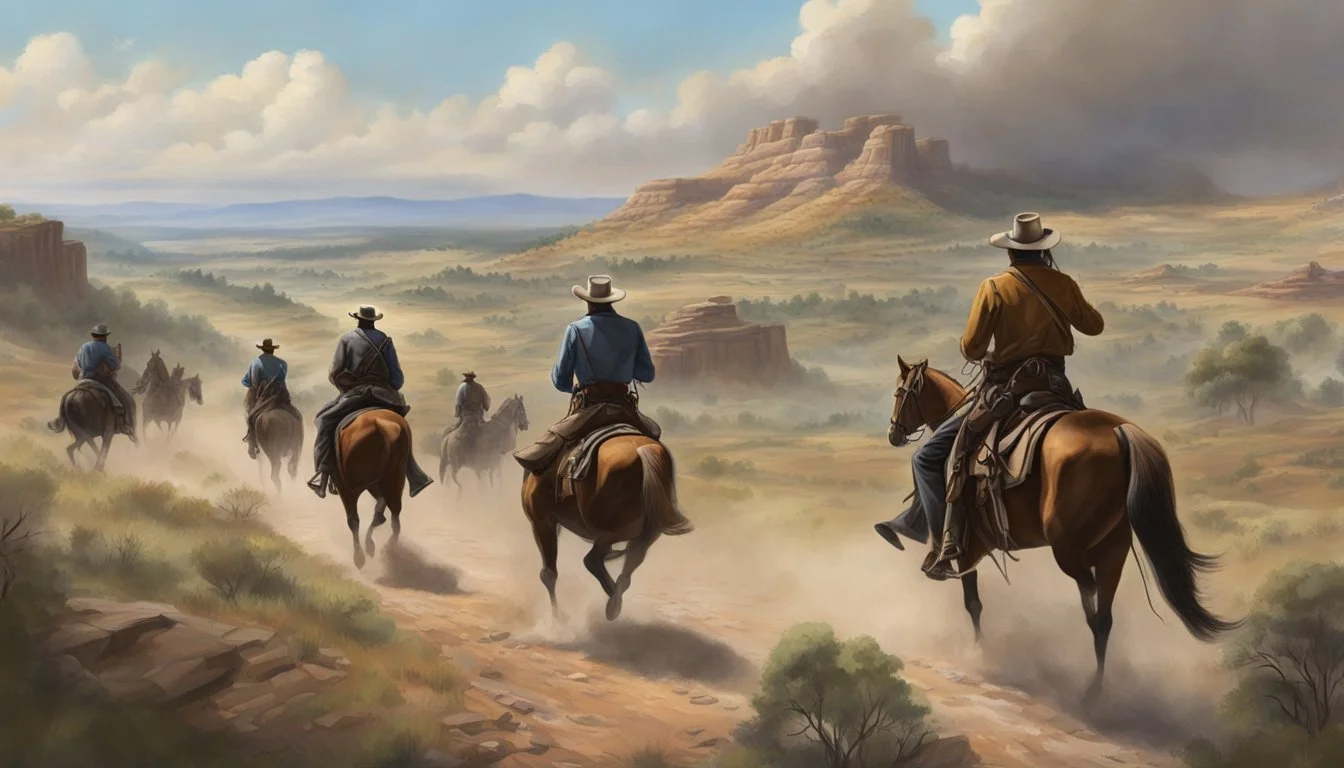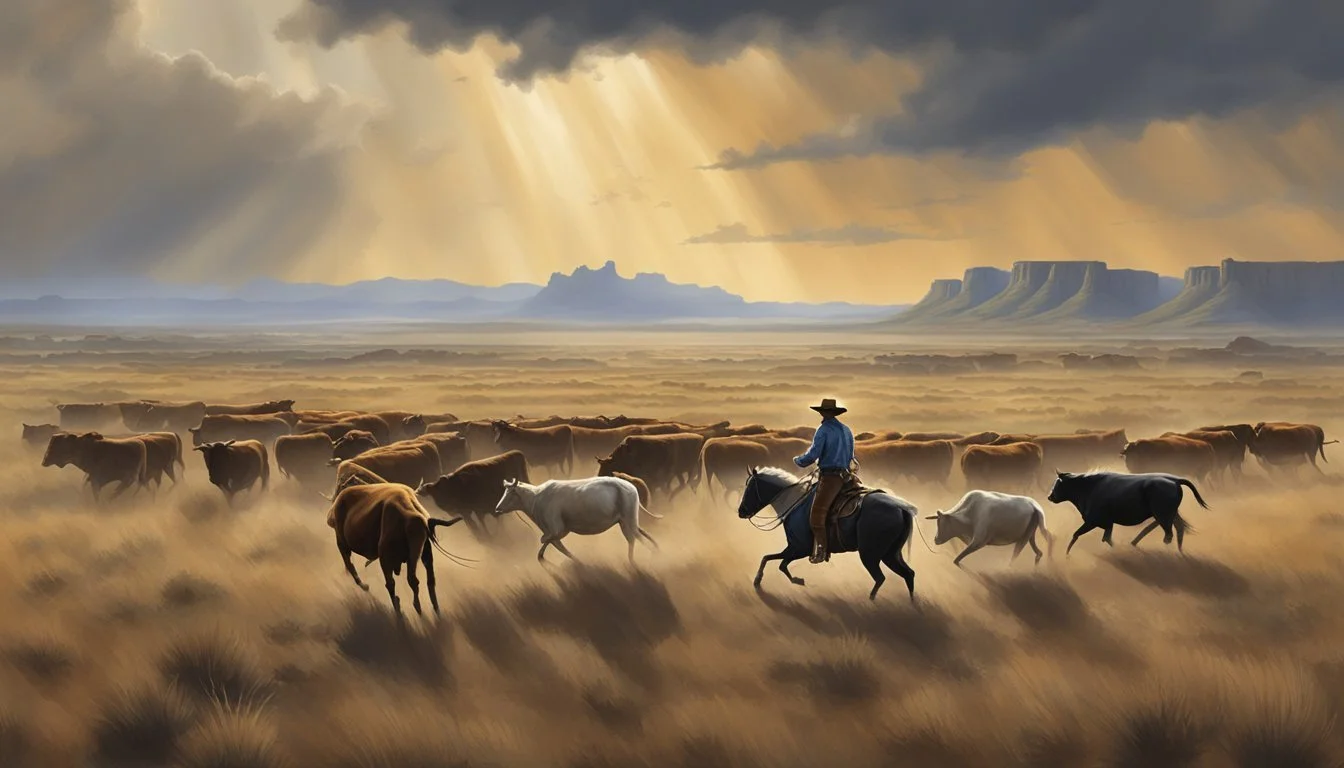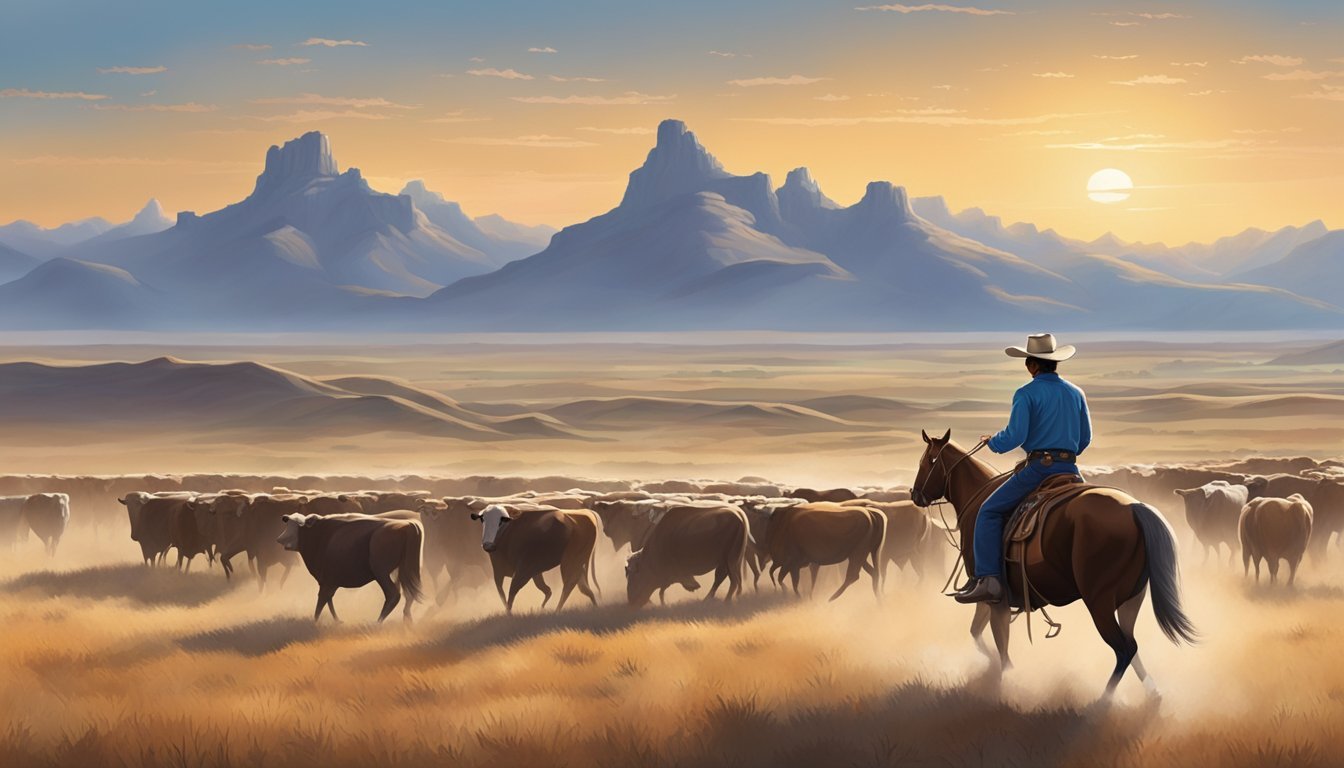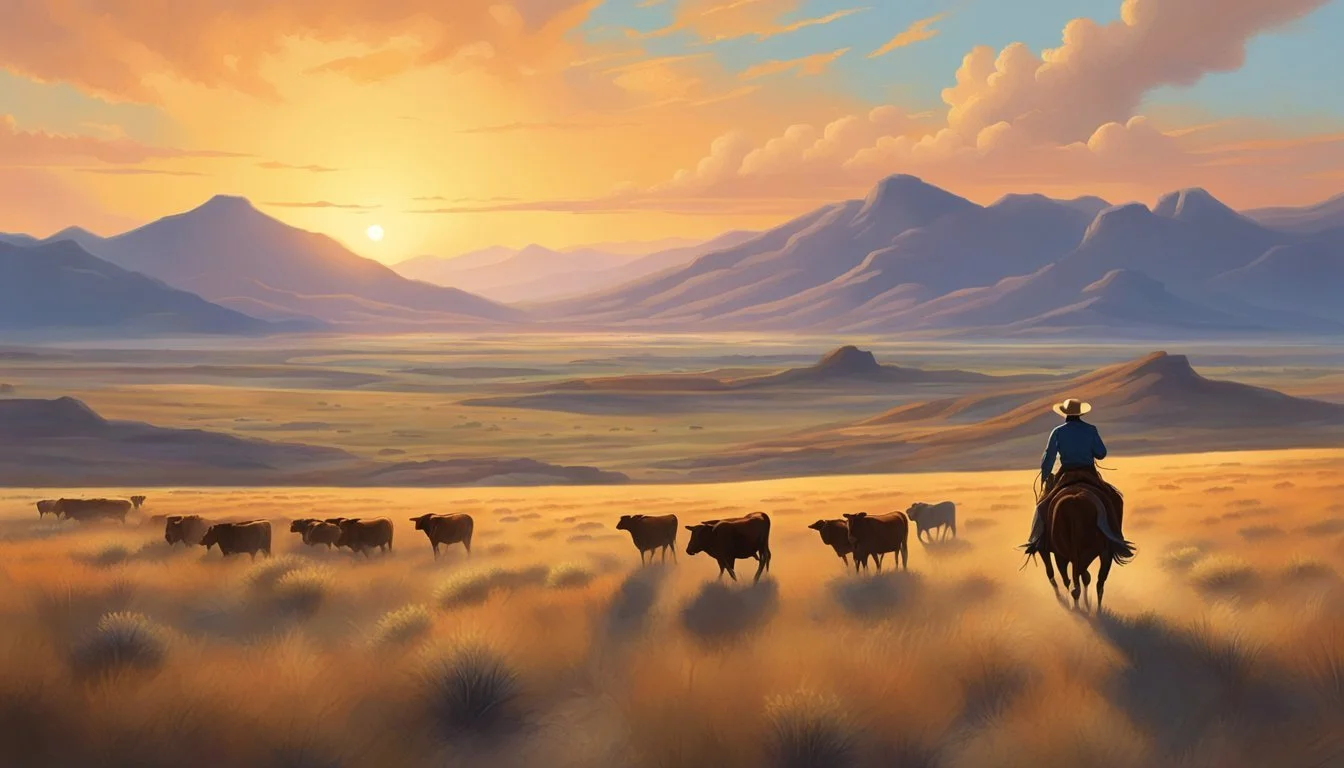The Evolution of the Texas Cowboy
Tracing the Cultural Legacy
The Texas cowboy has become an iconic symbol in American history, representing a unique combination of grit, independence, and the spirit of the Wild West. Often romanticized in film and literature, the real-life cowboy emerged in the 19th century, primarily as a cattle herder, against the backdrop of the vast Texan landscape. The end of the Civil War marked a significant expansion in the cattle industry, with Texas being at the forefront due to its extensive open range and the demand for beef in northern markets.
Contrary to popular depictions, cowboy culture was shaped by a diverse workforce. The typical Texas cowboy was a young man engaged in rigorous physical work, such as herding cattle across long trails, repairing fences, and managing livestock. Cowboys came from various ethnic backgrounds, including Mexican and African American heritage, each adding to the rich tapestry of cowboy culture.
As Texas evolved, cowboys adapted alongside the changing economic and social landscape. The late 19th and early 20th centuries saw the decline of the open range and the rise of fenced ranches, altering the cowboy's way of life. Despite the changes, the essence of the cowboy's hard work and connection to the land persisted, and over time, the cowboy became a symbol of Texas's cultural identity and an enduring part of the American mythos.
Early Origins of the Texas Cowboy
The Texas cowboy's genesis can be traced to foreign influences and a rich melting pot of cultures that shaped the ranching traditions we associate with the Lone Star State today.
Spanish Influence
The Spanish were instrumental in laying the groundwork for the cowboy lifestyle in Texas. Their legacy began with the introduction of cattle to the Americas in the 16th century. The vaqueros, or Spanish cowboys, were skilled in ranching techniques and horseback riding, which were essential skills for managing the large herds of cattle.
Ranching Tools and Techniques: Reflecting their expertise, vaqueros brought tools such as the lariat and practices like open-range ranching.
Cultural Legacy: The iconic cowboy image, including the sombrero akin to the vaquero's hat, evolved from these early Spaniards.
Native Americans and Ranching
Native American tribes, particularly in the regions that would become Texas, were quick to integrate with the burgeoning ranching economy. They adopted some of the Spanish horsemanship and herding methods while infusing their own rich traditions. Indigenous peoples contributed significantly to the evolving ranching industry through :
Trade and Labor: Engaging as intermediaries and workers in the cattle trade.
Ranching Skills: Adapting to the demands of livestock management and incorporating it into their economy.
African and Mexican Contributions
The contributions of African and Mexican individuals to the cowboy lineage are profound.
Mexican Impact: Post-Mexico's independence, Mexicans, including those of indigenous and mixed heritage (Hispanic or Mestizo), continued the vaquero tradition.
African American Cowboys: After Emancipation, many freed African Americans became cowboys. Their role in ranching was essential, but often underrepresented in historical accounts.
Diverse Cowboy Population: By the 19th century, this melding of cultures meant that cowboys were commonly of Mexican, African American, or mixed-race descent, shaping a diverse cowboy identity.
Through this mesh of influences, the early Texas cowboy emerged as a distinct figure, instrumental in the development of the region's iconic ranching culture.
Cowboy Life in the American West
The section provides insights into the demanding routines cowboys faced on the open range and the necessary attire and equipment integral to their way of life.
Daily Routines and Responsibilities
Cowboys began their days before sunrise, quickly consuming hearty meals to prepare for long hours ahead. Their primary duty was herding cattle, which required skills in riding and controlling the herd with tools like the lasso. Maintenance tasks such as repairing fences and caring for horses also punctuated their daily schedule.
Morning: Check and repair equipment; feed and groom horses.
Daytime: Ride out to monitor and move the herd; manage any stray cattle.
Evening: Secure cattle; perform necessary camp chores; night herding for some.
The Open Range
The vast open range presented both freedom and formidable challenges. Cowboys led cattle across expansive landscapes often filled with hazards, from inclement weather to rugged terrain. They had to possess detailed knowledge of the land and water sources to sustain both herds and themselves. The ability to read weather patterns and navigate by natural landmarks was essential.
Key Elements of the Open Range:
Wide expanses without fences.
Natural resources dictating the movement.
Unpredictable environmental conditions.
Attire and Equipment
Cowboys' attire was tailored for protection and practicality. Wide-brimmed hats shielded them from the harsh sun, while chaps protected their legs from thorny brush. Boots with heels were designed to prevent feet from slipping through stirrups.
Equipment List:
Cowboy hat: Indispensable for its protective, wide brim.
Chaps: Leather leg coverings for riding through abrasive vegetation.
Boots: High, sturdy footwear with a heel for riding stability.
Lasso: A roping tool used for catching livestock.
Their gear, including saddles and lassos, was crafted with durability to withstand the rigors of cowboy life.
Cattle Drives and Economic Impact
The cattle drives were a cornerstone in shaping both the economy and the legend of Texas during the 19th century, establishing vital trade routes and serving as a significant source of wealth.
The Routes of the Drives
The primary trails for cattle drives leading to marketplaces began in Texas, with San Antonio often serving as a starting point. Notably, the Chisholm Trail, Goodnight-Loving Trail, and others were carved into the landscape to connect Texas ranches with railways in Kansas. The development of these routes enabled drovers to move vast numbers of cattle to distant markets, where demand for beef was high.
Chisholm Trail: From Texas through Oklahoma to Kansas
Goodnight-Loving Trail: From Texas through New Mexico to Colorado
The Role of Cattle in the Economy
Cattle were crucial to the Texas economy following the Civil War, when beef demand surged, particularly in the Northeast and areas affected by the conflict. Steady growth in the cattle industry supported secondary businesses, such as leather and meatpacking industries. The influx of capital from cattle sales helped revitalize the post-war Texas economy, facilitating infrastructural improvements such as railways.
Key Economic Contributors:
Beef production
Leather goods
Meatpacking industry
End of the Driving Era
The cattle driving era waned by the mid-1890s due to several factors. The expansion of the railway system made trail drives less profitable and necessary, while barbed wire and settlement reduced the open range required for large-scale drives. Additionally, severe winters, overgrazing, and legislative actions aimed at controlling cattle disease marked the decline of this economic phenomenon.
Factors Leading to Decline:
Expansion of railways
Introduction of barbed wire
Harsh winters and overgrazing
Legislation on cattle health
Cowboys and the Civil War
The Civil War, a pivotal period in United States history, not only shaped the nation's political and social landscape but also had significant ramifications on the cowboy profession, particularly in Texas.
Regional Impact of the War
The Civil War's outbreak saw Texans primarily aligned with the Confederacy, with the region's vast range and cattle becoming a strategic asset. Cowboys found their skills in high demand. The cessation of the Union blockade post-war created a surplus of cattle in Texas. This drove the expansion of cattle drives, as cowboys moved herds north to meet the beef demands of a recovering nation.
Military Skills and Cowboy Practices
Proficiencies fostered during the military service such as riding, roping, and horsemanship were transitioned into cowboy practices. These skills were essential for managing the large herds on the expansive ranges. The resilience required by soldiers was mirrored in the life of the cowboy, who dealt with the adversities of long drives and the rigors of frontier life.
Cultural Significance and Evolution
The Texas cowboy is an iconic figure, symbolizing a spirit of independence and resilience. This evolution reflects not only in traditional practices but also in festivals, media, and contemporary livelihoods.
Cowboy Festivals and Rodeos
Cowboy festivals and rodeos serve as vital cultural events, celebrating the customs and skills associated with the cowboy way of life. Notable events such as the Houston Livestock Show and Rodeo draw huge crowds and provide an arena for cowboys to showcase rodeo sports that originate from practical ranching tasks. These gatherings reinforce the community's identity and promote the continuation of cowboy-related traditions.
Representation in Popular Culture
The image of the Texas cowboy has been immortalized by Hollywood, often romanticizing the lifestyle as rugged and adventurous. However, such representation isn't always accurate and can blur the lines between myth and reality. Despite this, the cowboy's place in popular culture has made a lasting impact on America's identity, reflecting the values of courage and determination associated with the West.
Cowboys in Modern Times
Contemporary cowboys maintain the cultural legacy while adapting to modern advancements in ranching methods and technology. They balance traditional horsemanship and cattle handling with modern agribusiness demands, showing the lasting impact and adaptability of cowboy culture. Their lifestyle continues to symbolize a distinct spirit and plays an integral role in shaping the cultural identity of Texas.
Expansion and Conflict
In the mid-19th century, Texas cowboys played a critical role in the American West during a period marked by relentless westward expansion and the inevitable conflicts that arose from it—disputes over land, resources, and cultural clashes with Native tribes.
Westward Expansion
The mantra of Manifest Destiny fueled the westward expansion as American settlers were convinced it was their rightful duty to spread across the continent. Texas, with its vast rangelands, became an epicenter for cattle ranching. Cowboys oversaw the herding of millions of cattle along famous routes like the Chisholm Trail. This expansion, aided by the growth of the railroad system, cemented the American West's reputation for vast opportunity.
Major Trails: Chisholm Trail, Goodnight-Loving Trail
Key Developments:
Railroads expansion
Ranch establishment
Interactions with Native Tribes
Encounters between cowboys and Native Americans were often marked by conflict and negotiation. As ranchers pushed into territories traditionally inhabited by Native tribes, tensions often escalated. The popular narrative of "Cowboys vs. American Indians," though sensationalized, has some basis in the numerous skirmishes that ensued as cowboys drove cattle across lands Native Americans depended on for their livelihoods.
Native Tribes Affected: Comanche, Kiowa, Apache
Nature of Interactions: Skirmishes, treaties, displacements
Border Disputes and Land Struggles
The Texan expansion also brought cowboys into direct conflict with Mexico, leading to disputes over land rights and cattle. Range wars erupted between different ranching factions, often escalating into violence over grazing rights and water access. The introduction of barbed wire in the late 19th century fundamentally changed the landscape, effectively ending the era of open-range and beginning a new chapter of fenced-in, privately owned parcels.
Disputes With: Mexico, rival ranchers
Technological Impact: Barbed wire fencing
Preservation of Cowboy Heritage
The preservation of the cowboy heritage in Texas is manifested through the concerted efforts of museums and the continuation of traditional cowboy skills and practices.
Historical Museums and Institutions
Museums play a crucial role in preserving the cowboy spirit and culture. The National Cowboy & Western Heritage Museum, located in Oklahoma City, is a prime institution dedicated to celebrating the legacy of the American cowboy. It offers a comprehensive narrative of cowboy history, from their Spanish roots to the iconic image associated with the American West, attracting tourists and history enthusiasts alike.
Texas itself is replete with institutions such as Chisholm's Western Heritage Museum in Cuero, TX, which has become a central repository for historical artifacts and exhibitions telling the true stories of the longhorn cattle drives and the cowboys' way of life. These museums work tirelessly to ensure that the essence of the cowboy profession and its impact on American culture is not forgotten.
Preservation of Skills and Traditions
Cowboy culture is not just preserved in the quiet halls of museums; it thrives actively through the preservation of skills and traditions. Rodeos and cattle drives continue to be pivotal in maintaining the practical aspects of cowboy expertise, focusing on horsemanship, cattle herding, and other ranching skills. They serve as living museums where the cowboy’s profession can be experienced firsthand.
Organizations and communities throughout Texas hold regular events emphasizing the educational aspect in the form of workshops and demonstrations of classic cowboy trades. This hands-on approach ensures that the traditional knowledge and skills integral to cowboy culture are passed on to new generations, maintaining their relevance in a modern context.
Ranching and the Cattle Industry Today
The Texas cattle industry continues to thrive through innovative ranching practices and significant contributions to the modern economy. This section examines the contemporary state of ranching and its economic impact.
Changes in Ranching Practices
Texas ranches have historically been a backbone of the state's identity, and today they successfully integrate tradition with technology. Advancements in livestock management include the use of drones for monitoring herds and sophisticated software for tracking cattle health and productivity. Progressive changes in animal husbandry and pasture management enhance the sustainability and efficiency of these operations. In terms of branding, the practice has transformed with modern identification techniques such as electronic tagging, which provides precise traceability while ensuring the welfare of the livestock.
Cattle Industry in the Modern Economy
Today's cattle industry is a significant economic force in Texas, representing a confluence of longstanding heritage and modern business practice. The industry bolsters the state's economy through substantial contributions to both employment and the GDP. It faces challenges such as market volatility and international competition but maintains resilience and endurance through diversification and strategic trade practices.
Texas ranches are active in confronting issues of discrimination, making strides in workforce diversity and ensuring equal opportunities within the ranching community. The cattle industry as a whole has evolved to be more inclusive, reflecting the values of equity in the contemporary workforce landscape.
The Texas Cowboy: Myth vs. Reality
The iconic image of the Texas cowboy is often a blend of embellishments and truths. This section dissects the cinematic portrayal versus the authentic lifestyle of these Western figures.
Hollywood's Cowboys
Hollywood has long been instrumental in crafting the popular image of the cowboy. It has consistently projected cowboys as gallant, lone rangers traversing the Wild West. Movies depict them as heroes in white hats, symbolizing freedom and adventure. This has shaped a worldwide perception of cowboy culture that focuses on gunfights, outlaw showdowns, and picturesque landscapes that rarely reflect the historical reality of the cowboy's life.
Movies to Consider:
"The Searchers" (1956)
"High Noon" (1952)
"Unforgiven" (1992)
These films feature culturally iconic cowboys, and while they capture the spirit of the Wild West, they often overlook the more mundane aspects of a cowboy's daily tasks and responsibilities.
The True Nature of Cowboy Work
In truth, the life of a Texas cowboy was less about heroics and more about hard work and dedication to cattle ranching. Cowboys spent long hours herding livestock, maintaining ranches, and conducting cattle drives. They had to be skilled in horsemanship and have in-depth knowledge of the land and animal behavior. The reality of their life was shaped by the weather, the seasons, and the hard economics of the livestock business.
Typical Cowboy Responsibilities:
Monitoring and moving cattle herds
Repairing fences and structures on the ranch
Managing the breeding and healthcare of the herd
These responsibilities highlight a rugged lifestyle, but one far more grounded in laborious tasks than the stylized conquests spouted by silver screen tales. Texas cowboy culture owed much to the influence of Spanish vaqueros, and over time, the cowboy became an emblem of not just Texas but the expansive, pioneering ethos of the American West.







